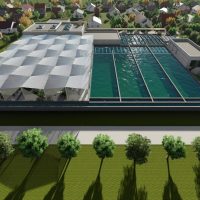by Jann Lau, Market Analyst at Organica Water
Out of sight, out of mind. It is said that if you don’t see something frequently, you will forget about it. Ironically, we see infrastructure everywhere. Roads, bridges, dams, sewers, electrical grids, and telecommunication towers are all around us and represent the backbone of growth and productivity. Yet it is this very prevalence of infrastructure that causes us to take it for granted. We give little thought to the infrastructure around us so long as it works. It is only when infrastructure fails and something “exciting” happens that interrupts our lives do we give it our attention. The ensuing scramble usually results in only stop-gap solutions, to the detriment of a properly planned long-term resolution.
Similarly, the water industry’s conventional approach to maintenance is reactive – pipes are run to failure, with individual pipe failures repaired until the failure rate reaches a predetermined level, only at which point the entire section of pipeline is replaced.
On HBO, John Oliver’s popular satirical news show recently put infrastructure back in the spotlight. Though I laughed at the funny yet frightening anecdotes – the city of Pittsburgh built a bridge under a bridge to catch debris falling off the first bridge (another reactive/stop gap solution!) – lack of funding and political will to solve these problems is alarming. But is that the real problem? As CEO of Organica Water, Ari Raivetz points out that the root of the problem is not a lack of financing, but the absence of an accessible and economic solution.
Bridge under a bridge to catch falling debris in Pittsburgh, USA
Back to those pipes I mentioned earlier. In the United States alone, over $220 billion is needed over the next 20 years to fix and expand the pipes for wastewater and stormwater systems. Billions more are needed for drinking water infrastructure. This is an incredibly expensive endeavor that will have to be financed primarily through increased water bills, taxes, bonds, and local fees. But what if there were simply less pipes? Wouldn’t it be easier to manage and cheaper to maintain? Wouldn’t that reduce the number of leaks, breaks, clogs, blocks, and overflows? The historical definition of “insanity” is “doing the same thing over and over again and expecting different results”. Even more insane is building more and more pipes that will have to eventually be repaired and replaced. A quick look at this terrifying Water Main Break Clock shows just how unsustainable this is.
For there to be less pipes, there has to be a shift toward more sustainable, localized wastewater treatment.
Similar to how the “local food movement” reduces the separation between producer and consumer, “local wastewater treatment” aims to treat wastewater close to the source to reduce pipe infrastructure needs, but also facilitate reuse by producing reclaimed water close to the point-of-use. To visualize the magnitude of this difference, take a look at the graph below for the “food miles” your produce has to travel to get to you – conventionally sourced produce travels anywhere from 8x (pumpkin) to 92x (broccoli) further than their locally grown counterparts! Looking at the distance travelled by food, you may be tempted to conclude that local farming is better for the environment and potentially more cost effective. However, this is NOT the complete story. The USDA publishes a food dollar series that measures annual expenditures on domestically produced food by US consumers. The food dollar is divided into a set of input component values. The latest data as of 2012 has “transportation” contributing approximately 3.3 cents (nominal) of each food dollar expenditure. So while the distance your food travels matters, it is far more important to account for how the food is grown, how it is stored, and how it is prepared.
In wastewater infrastructure, the same logic applies (the potential to reduce “wastewater miles” by going local is enormous), but the cost equation is flipped. According to published data by Global Water Intelligence, total municipal wastewater expenditure is forecasted to exceed $100 billion a year. Of this, over 60% is spent on the wastewater conveyance systems, and only 30% on wastewater treatment plants; implying a shift to localized treatment can have a tremendous financial impact. However, going local raises new challenges – conventional wastewater systems are ugly and smelly, nobody wants to live near them so they have to be built far away from the wastewater source (and potential reuse sites). For localized wastewater treatment to be feasible, we need a system that is “neighbor friendly”, not only beautiful and odor-free, but also space efficient and cost competitive. As a result, infrastructure becomes in sight (though not unsightly) and in mind. The good news is that such a localized system exists.

